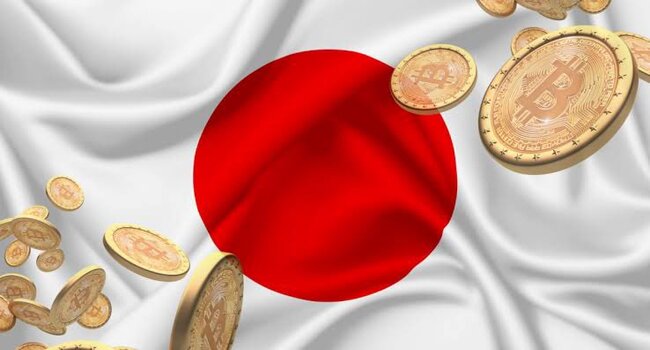| COINOTAG recommends • Exchange signup |
| 💹 Trade with pro tools |
| Fast execution, robust charts, clean risk controls. |
| 👉 Open account → |
| COINOTAG recommends • Exchange signup |
| 🚀 Smooth orders, clear control |
| Advanced order types and market depth in one view. |
| 👉 Create account → |
| COINOTAG recommends • Exchange signup |
| 📈 Clarity in volatile markets |
| Plan entries & exits, manage positions with discipline. |
| 👉 Sign up → |
| COINOTAG recommends • Exchange signup |
| ⚡ Speed, depth, reliability |
| Execute confidently when timing matters. |
| 👉 Open account → |
| COINOTAG recommends • Exchange signup |
| 🧭 A focused workflow for traders |
| Alerts, watchlists, and a repeatable process. |
| 👉 Get started → |
| COINOTAG recommends • Exchange signup |
| ✅ Data‑driven decisions |
| Focus on process—not noise. |
| 👉 Sign up → |
The United States and Vietnam have agreed on a new trade framework that maintains a 20% tariff on most Vietnamese goods entering the U.S., while paving the way for zero duties on select products in the future. This deal aims to balance trade relations and enhance market access for both nations’ exporters.
-
The agreement preserves the 20% tariff rate announced in July, targeting Vietnam’s $123 billion trade surplus with the U.S. last year.
-
It provides preferential access for American goods into Vietnam, addressing non-tariff barriers like regulatory approvals.
-
Bilateral trade surged 27% to $126.4 billion in the first nine months, with Vietnam committing to Boeing aircraft and agricultural purchases worth over $10.9 billion.
US-Vietnam trade agreement maintains 20% tariffs on key goods while opening zero-duty paths and boosting U.S. exports. Discover how this framework reshapes bilateral trade—explore details now.
What is the new US-Vietnam trade agreement?
The US-Vietnam trade agreement is a bilateral framework designed to foster reciprocal and balanced trade relations between the two countries. It retains a 20% tariff on most goods exported from Vietnam to the United States, as initially set in July under former President Donald Trump’s administration, while establishing a process to reduce duties to zero for specific products. This initiative responds to Vietnam’s significant trade surplus of $123 billion with the U.S. in the previous year, aiming to enhance supply chain resilience and market access for exporters on both sides.
| COINOTAG recommends • Professional traders group |
| 💎 Join a professional trading community |
| Work with senior traders, research‑backed setups, and risk‑first frameworks. |
| 👉 Join the group → |
| COINOTAG recommends • Professional traders group |
| 📊 Transparent performance, real process |
| Spot strategies with documented months of triple‑digit runs during strong trends; futures plans use defined R:R and sizing. |
| 👉 Get access → |
| COINOTAG recommends • Professional traders group |
| 🧭 Research → Plan → Execute |
| Daily levels, watchlists, and post‑trade reviews to build consistency. |
| 👉 Join now → |
| COINOTAG recommends • Professional traders group |
| 🛡️ Risk comes first |
| Sizing methods, invalidation rules, and R‑multiples baked into every plan. |
| 👉 Start today → |
| COINOTAG recommends • Professional traders group |
| 🧠 Learn the “why” behind each trade |
| Live breakdowns, playbooks, and framework‑first education. |
| 👉 Join the group → |
| COINOTAG recommends • Professional traders group |
| 🚀 Insider • APEX • INNER CIRCLE |
| Choose the depth you need—tools, coaching, and member rooms. |
| 👉 Explore tiers → |
How will non-tariff barriers be addressed in the US-Vietnam trade agreement?
The agreement includes commitments to tackle non-tariff barriers that have long hindered smoother trade flows. Vietnam has pledged to recognize U.S. motor vehicle safety and emissions standards, allowing American-made vehicles to enter its market without additional testing. This move simplifies imports for U.S. medical devices through revised licensing procedures and accelerates regulatory approvals for pharmaceuticals. Furthermore, Vietnam will uphold international intellectual property treaties, protecting innovations from both nations. According to the joint statement, these steps will strengthen cooperation on export controls and prevent duty evasion, particularly for goods transiting through Vietnam from third countries. Customs data highlights the urgency: bilateral trade volume climbed 27% year-over-year to $126.4 billion in the first nine months, with Vietnam’s surplus expanding to $99.1 billion from $77.2 billion. Experts note that such measures could reduce administrative delays, potentially saving U.S. exporters millions in compliance costs annually.
The framework also emphasizes supply chain resilience amid global disruptions. Both governments will collaborate on verification processes to curb evasion tactics, where products from other regions are rerouted via Vietnam to exploit lower tariffs. This is crucial as U.S. imports from Vietnam have grown rapidly, fueled by electronics, textiles, and footwear sectors. The joint statement underscores a shared commitment to fair practices, stating that the deal will provide “unprecedented access” to each other’s markets. Legal finalization and implementation are targeted for the coming weeks, involving domestic procedures in both countries.
| COINOTAG recommends • Exchange signup |
| 📈 Clear interface, precise orders |
| Sharp entries & exits with actionable alerts. |
| 👉 Create free account → |
| COINOTAG recommends • Exchange signup |
| 🧠 Smarter tools. Better decisions. |
| Depth analytics and risk features in one view. |
| 👉 Sign up → |
| COINOTAG recommends • Exchange signup |
| 🎯 Take control of entries & exits |
| Set alerts, define stops, execute consistently. |
| 👉 Open account → |
| COINOTAG recommends • Exchange signup |
| 🛠️ From idea to execution |
| Turn setups into plans with practical order types. |
| 👉 Join now → |
| COINOTAG recommends • Exchange signup |
| 📋 Trade your plan |
| Watchlists and routing that support focus. |
| 👉 Get started → |
| COINOTAG recommends • Exchange signup |
| 📊 Precision without the noise |
| Data‑first workflows for active traders. |
| 👉 Sign up → |
Frequently Asked Questions
What tariffs does the US-Vietnam trade agreement impose on Vietnamese exports?
The agreement upholds a 20% tariff on most goods shipped from Vietnam to the U.S., a rate first introduced in July to address trade imbalances. It also includes a 40% levy on items routed through Vietnam from other countries. However, both sides will negotiate a list of products eligible for zero duties, promoting balanced growth without immediate widespread reductions.
How does the US-Vietnam trade agreement benefit American exporters?
This deal grants preferential access for U.S. goods into Vietnam, easing non-tariff hurdles like vehicle standards recognition and streamlined approvals for medical and pharmaceutical products. Vietnam’s purchases, including 50 Boeing aircraft for over $8 billion and $2.9 billion in agricultural commodities, directly boost U.S. sales and help narrow the trade deficit.
| COINOTAG recommends • Traders club |
| ⚡ Futures with discipline |
| Defined R:R, pre‑set invalidation, execution checklists. |
| 👉 Join the club → |
| COINOTAG recommends • Traders club |
| 🎯 Spot strategies that compound |
| Momentum & accumulation frameworks managed with clear risk. |
| 👉 Get access → |
| COINOTAG recommends • Traders club |
| 🏛️ APEX tier for serious traders |
| Deep dives, analyst Q&A, and accountability sprints. |
| 👉 Explore APEX → |
| COINOTAG recommends • Traders club |
| 📈 Real‑time market structure |
| Key levels, liquidity zones, and actionable context. |
| 👉 Join now → |
| COINOTAG recommends • Traders club |
| 🔔 Smart alerts, not noise |
| Context‑rich notifications tied to plans and risk—never hype. |
| 👉 Get access → |
| COINOTAG recommends • Traders club |
| 🤝 Peer review & coaching |
| Hands‑on feedback that sharpens execution and risk control. |
| 👉 Join the club → |
Key Takeaways
- Maintains 20% tariffs: The framework keeps existing duties on Vietnamese goods to the U.S. while identifying zero-duty candidates, based on Vietnam’s $123 billion surplus last year.
- Enhances U.S. market access: Vietnam agrees to recognize American standards for vehicles, devices, and drugs, plus IP treaty compliance, reducing barriers for exporters.
- Boosts supply chain cooperation: Joint efforts on duty evasion and export controls, amid 27% trade growth to $126.4 billion, ensure resilient bilateral flows.
Conclusion
The US-Vietnam trade agreement marks a pivotal step toward equitable economic ties, retaining 20% tariffs on key imports while addressing non-tariff barriers and expanding opportunities for U.S. exports through major purchases in aviation and agriculture. By focusing on supply chain integrity and market reciprocity, this framework not only mitigates Vietnam’s trade surplus but also fosters long-term stability in bilateral relations. As negotiations progress on zero-duty lists in the coming weeks, businesses on both sides stand to gain from enhanced predictability—stay informed on developments to leverage these shifts effectively.
| COINOTAG recommends • Members‑only research |
| 📌 Curated setups, clearly explained |
| Entry, invalidation, targets, and R:R defined before execution. |
| 👉 Get access → |
| COINOTAG recommends • Members‑only research |
| 🧠 Data‑led decision making |
| Technical + flow + context synthesized into actionable plans. |
| 👉 Join now → |
| COINOTAG recommends • Members‑only research |
| 🧱 Consistency over hype |
| Repeatable rules, realistic expectations, and a calmer mindset. |
| 👉 Get access → |
| COINOTAG recommends • Members‑only research |
| 🕒 Patience is an edge |
| Wait for confirmation and manage risk with checklists. |
| 👉 Join now → |
| COINOTAG recommends • Members‑only research |
| 💼 Professional mentorship |
| Guidance from seasoned traders and structured feedback loops. |
| 👉 Get access → |
| COINOTAG recommends • Members‑only research |
| 🧮 Track • Review • Improve |
| Documented PnL tracking and post‑mortems to accelerate learning. |
| 👉 Join now → |
Source: https://en.coinotag.com/us-vietnam-trade-deal-advances-20-tariffs-hold-zero-duty-pathways-for-select-goods/


